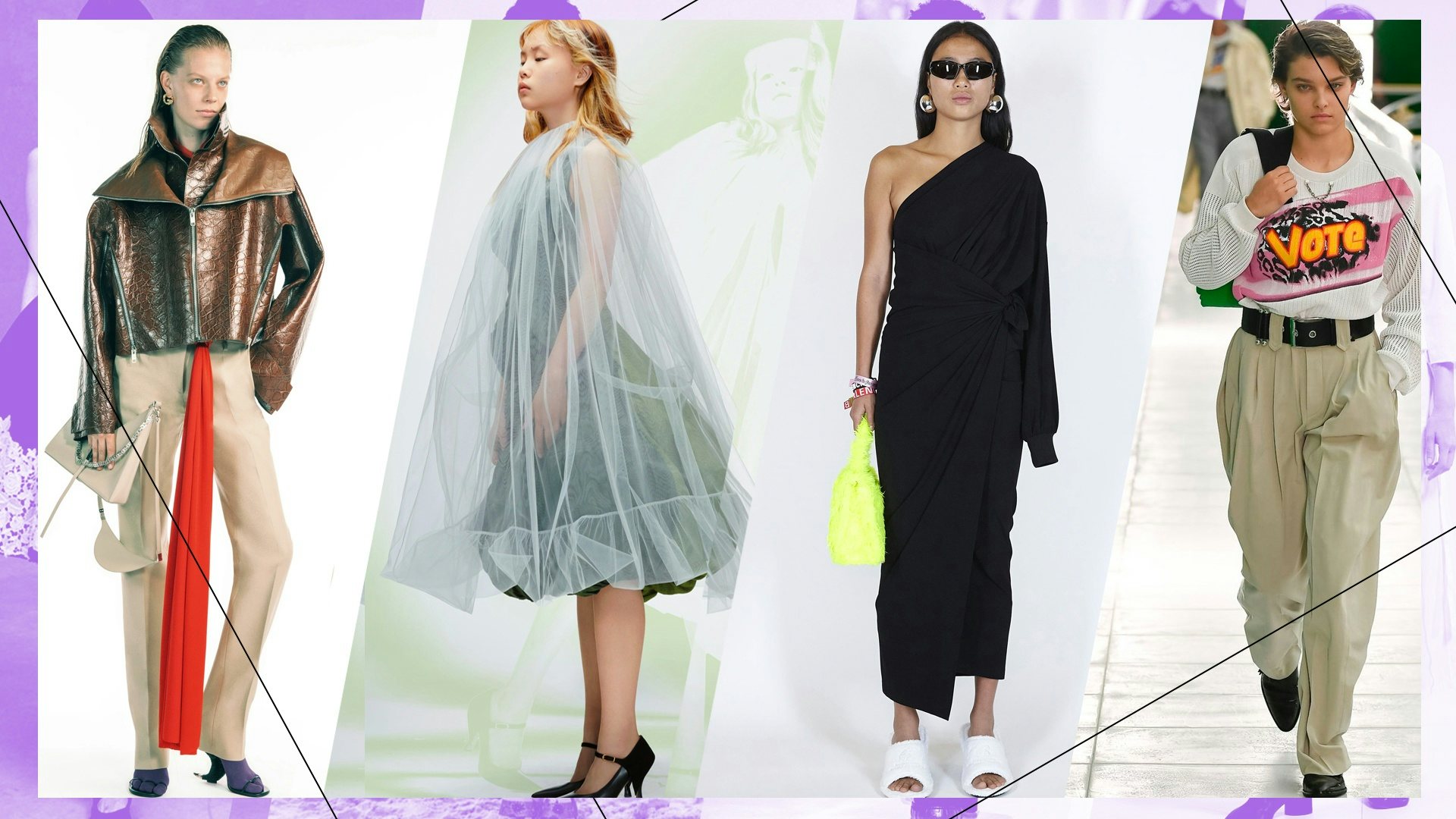This season,
Jing Daily Fashion Week Score#
, which evaluates how a brand’s collection resonates with the Chinese audience through a range of parameters, focuses on Paris, the last stop of the big four Spring 2021 Fashion Weeks. Of these, Paris managed to combine digital to the greatest effect and its designers took leaps of the imagination with their collections, which almost made up the lack of runway shows. But this is the new reality and fashion audiences need to readjust for the long haul.
Nonetheless, there were physical outings from the likes of Dior and Chanel but in the current climate these plush affairs seemed oddly surreal. The need to incorporate digital innovation was widely acknowledged by the schedule’s designers though and this was often felt by more than a nod to the guests still unable to join in person. Vacant seats at Louis Vuitton represented virtual guests; they stood as an eerie, futurist reminder of COVID-19’s disruptive and alienating presence.
This is a challenging landscape for brands to navigate, but it is good news for China. Luxury houses and designers are being forced to reassess how they engage with fashion-lovers on the mainland. This season, more than ever, it was time to draw heavily on their little black books to enlist the help of brand ambassadors, KOLs, and influencers to amplify their reach — and in most cases it worked.
Brands dug deep. Livestreaming as a springboard to connect with absent Chinese audiences was a key feature of Paris Fashion Week. Dior’s socially distanced show was virtually streamed via Weibo, likewise Chanel and Miu Miu among others. Watch parties, a trend that also appeared during Milan Fashion Week, complimented shows and featured selected brand audiences. Even homegrown talent Li Ning tapped the craze and hosted its own physical watch party in Beijing which resonated particularly well among its local fans. Until the West is able to better adjust to the pandemic (or a long-awaited vaccine is found) we might even see a shift in the schedule to accommodate watchers in China Standard Time — between six and seven hours ahead of Central European Time.
The
Jing Daily Fashion Week Score#
is based on the following parameters:
- Model representation: evaluates representation of Chinese models on the runway.
- Digital impact: evaluates Chinese netizen reception and engagement on leading social media platforms, including Weibo, WeChat, and Little Red Book.
- KOL & celebrity visibility: considers the star power associated with the brand through strategic KOL and celebrity partnerships.
- Special brand efforts: considers special programs or efforts on a brand’s part to speak to the Chinese audience. Company or brand contributions toward the on-going virus crisis are also considered.
- Design context: a qualitative assessment of how the brand’s collection will speak to the Chinese audience based on current trends and preferences.
- Brand history: considers existing brand history in China, including overall presence, social reach, number of stores, earning trends, and brand missteps.
Dior#
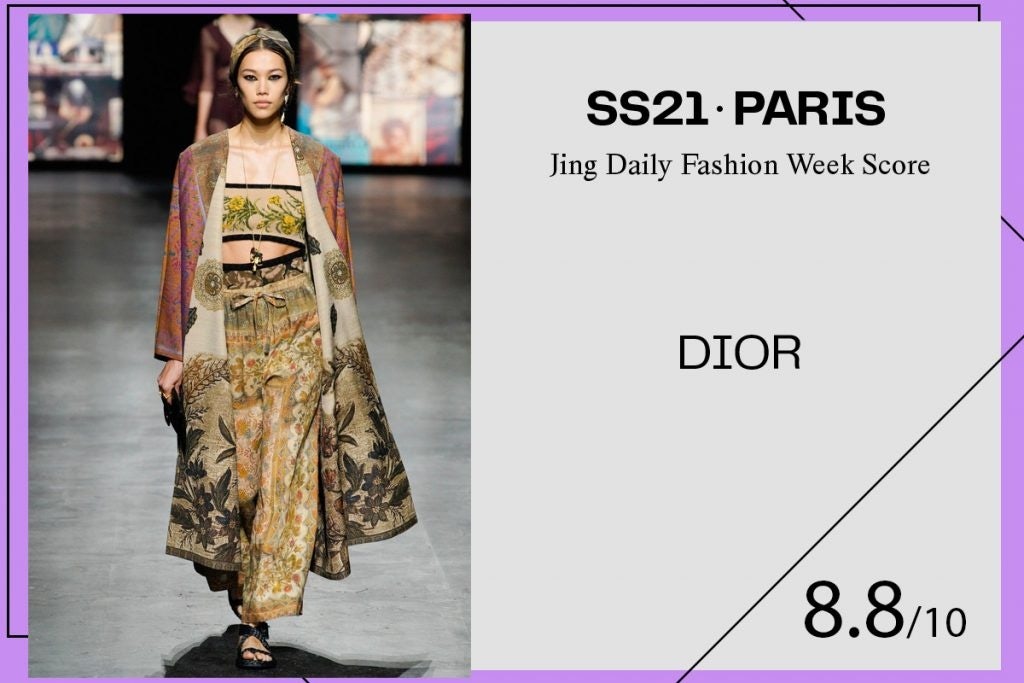
Dior’s Spring 2021 collection echoed the quarantine lifestyle, featuring concepts such as work-from-home and ideas of physicality. As designer Maria Grazia Chiuri described her mission in the disrupted fashion landscape of 2020, “We had to approach this collection with an idea more of design. We are living in a different way and staying more at home within our intimacy. Our clothes have to reflect this new style of life.” The show was simultaneously presented to a socially distanced audience in a tent at Jardin des Tuileries and virtually streamed via Weibo to capture local viewership. Videos starring celebrities like Meng Meiqi, Sophie Zhang, and Yang Caiyu invited netizens to watch the livestream were posted on Weibo before the show. The livestream featured the invited KOLS alongside brand ambassadors, and tastemakers including Hung Huang, who shared their impressions on the show currently has over 51.2 million views.
Louis Vuitton#
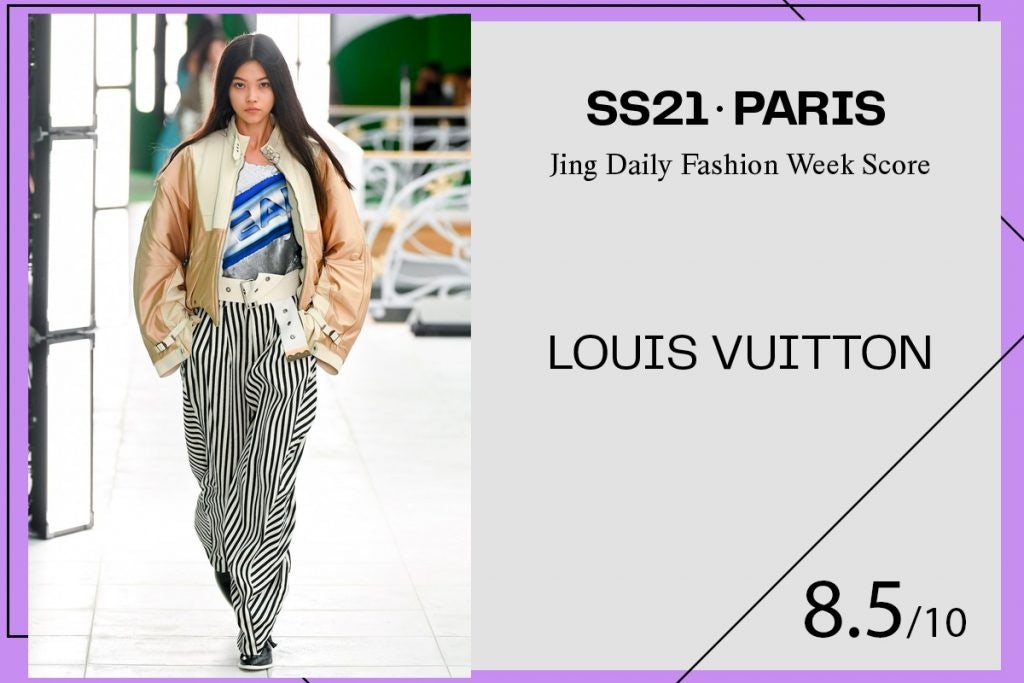
Louis Vuitton played down its China marketing last season (during the hardest hitting time of the COVID-19 pandemic in China) but it has gone all-in with its technological efforts for Spring 2021. The new collection, designed by Nicolas Ghesquière, was shown at the recently remodeled Parisian department store La Samaritaine. Just over 200 guests physically attended but virtual seats were also allocated (made possible by 360-degree cameras) to global guests that included the Shanghai-based fashion blogger @Mr. Kira. With a soundtrack of energetic beats playing in the background, models walked through the hallways in tops with large pop-art style fonts reading “Vote” and “Drive,” while some carried a document holder applicable for Chinese office ladies’ smart casual outfits. The bloggers Elephant Kingdom (@小象王国) and @Twice-Chic have already made targeted posts about Louis Vuitton’s new handbags to their combined Weibo following of 13 million.
Miu Miu#
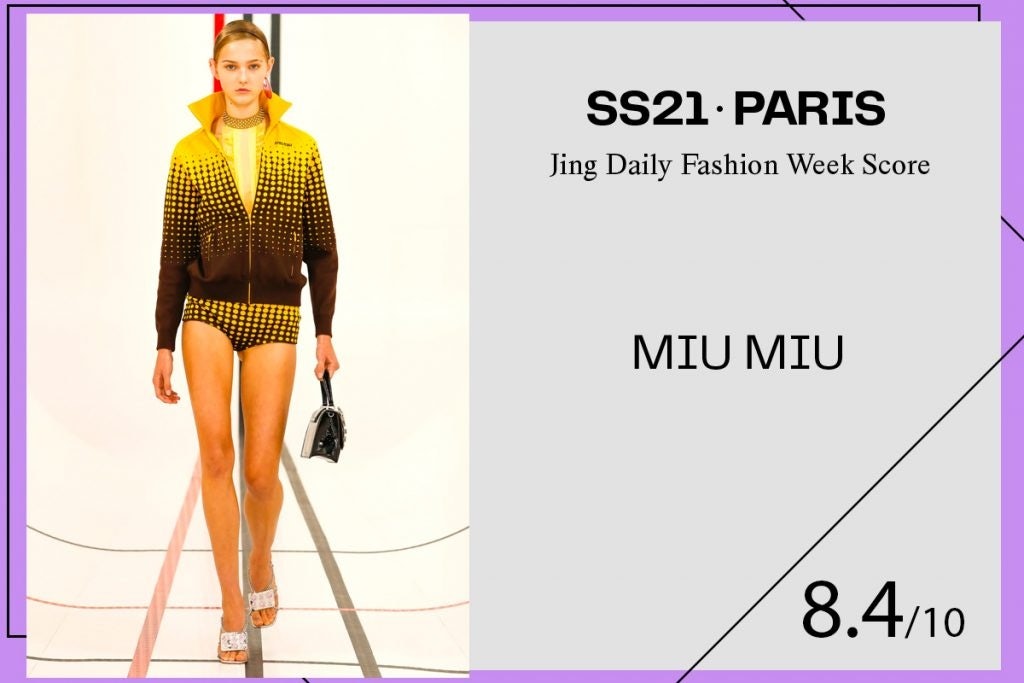
This season Miuccia Prada is well aware that the routine life of a teenager has been disrupted by the pandemic —school, sports, and summer parties cannot be replaced by virtual alternatives. To acknowledge this, the designer gifted Miu Miu’s fangirls with a collection based on the communal spirit of girlhood. Livestreamed from Milan, the show was staged in a cyber-spacious sports arena — dubbed the Miu Miu Club — surrounded by screens featuring Miu Miu’s global poster girls watching the show. Chinese viewers included Yang Chaoyue, Lexie Liu, Zeng Meihuizi, Du Juan, and Xiao Wen Ju. In addition to a virtual presentation that hit nearly five million views on Weibo and Tencent Video, a physical screening and intimate receptions with celebrities, press, and KOLs was hosted in Shanghai’s Bund area that evening. The sense of polarity — evening clothing against sportswear, pragmatism, and preciousness, reality versus digital — has been well-received by Chinese audiences and fashionistas.
Li Ning#
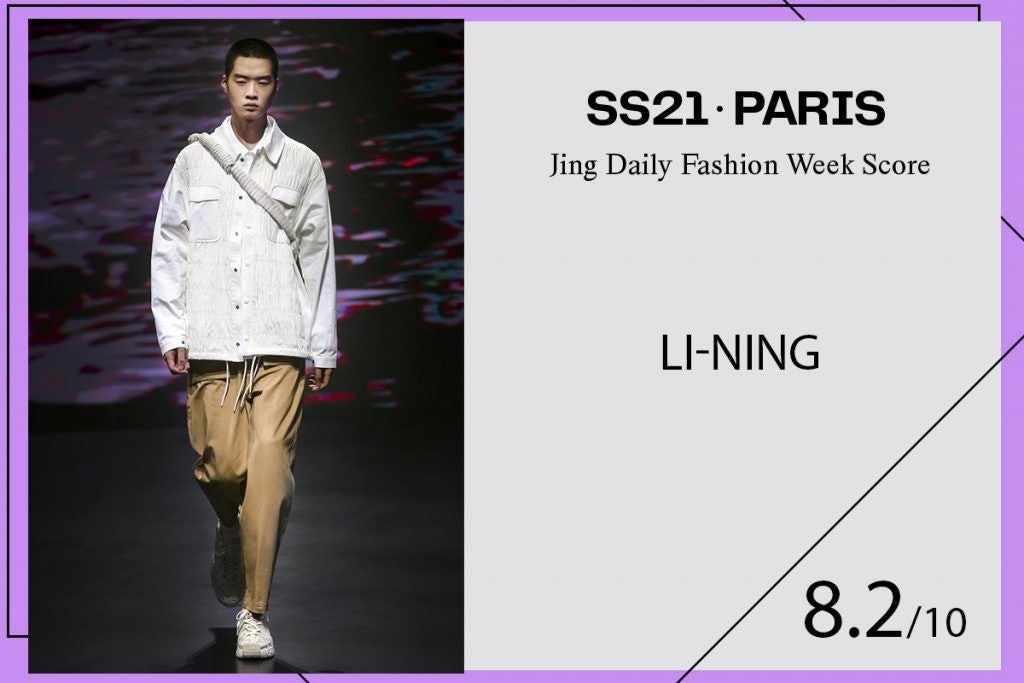
Inspired by earth, fire, water and air — four cosmic elements from classical Chinese philosophy — sportswear brand Li Ning’s collection “The Art of Movement” reconnected old and new China. The film presentation featured 40 looks, including an all-Chinese model line-up, and a short movie made by Chinese multimedia artist Lu Yang. The local brand has a commendable grasp of its social media and has made considerable efforts to engage with viewers on Weibo. Cleverly, much of this is focused outside of the fashion group. The brand invited a band from the popular contest show The Big Band, former model, designer Mary Ma, and actors including Zhao Wenhao for the physical watch party in Beijing. Moreover, given the brand’s local connections, it also tapped comedian Shaobing, rapper Sun Xu, and ping pong player Ma Long who also contributed greatly to Li Ning’s social volume. It paid off, and as a result, the official Weibo hashtag #Li Ning SS2021 (#中国李宁2021春夏数字秀#) has been viewed 370 million times. Over one million posts were made and the collection hashtag #Art of the movement (#运动的艺术#) currently has 70 million views.
Chanel#
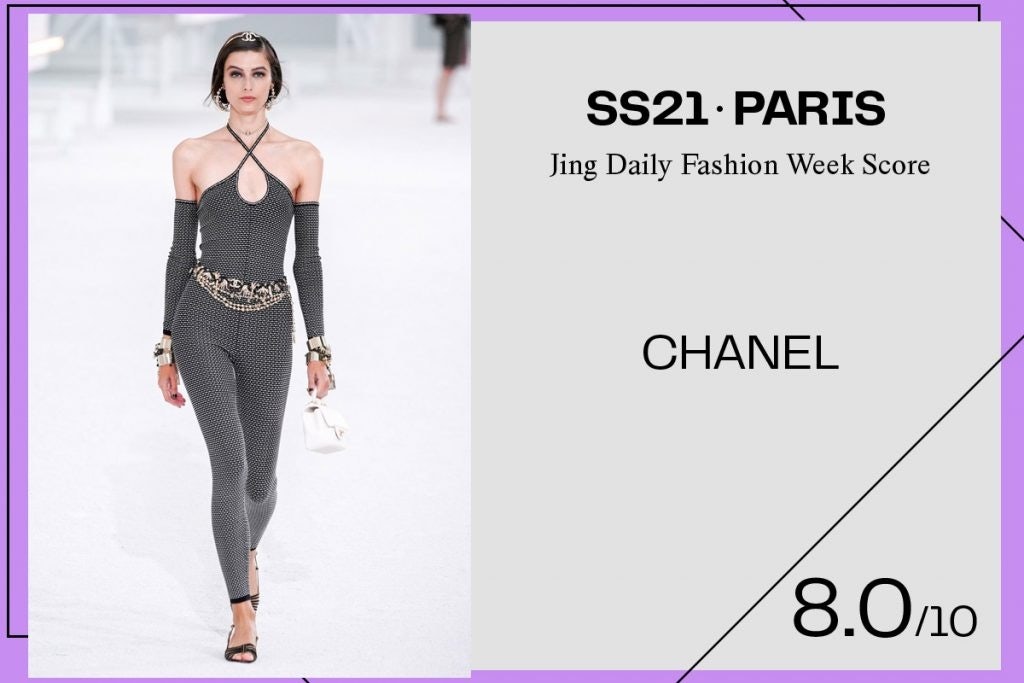
Chanel’s inspiration was clear — it spelled out the brand’s name in the style of the iconic Hollywood sign at the Grand Palais in Paris. Three-dimensional paper cut invitations featuring the motif were also delivered to brand ambassadors across the world. Over ten Chinese celebrities including Liu Shishi, Jing Boran, and William Chen shared the invitation and livestream notice on their Weibo accounts. Collectively, these celebrity and KOL followers amount to over 367 million, driving huge social traffic for the virtual presentation. As many luxury players opted for practicality, designer Virginie Viard celebrated classic Chanel codes by balancing romance and coolness meaning the overall concept of the show was divorced from the current social climate. But, will the house’s vision for creating dreams and fantasies pay off in the post-COVID-19 China? The long queues outside the brand’s physical boutiques should shed some light on the answer.
Hermès#
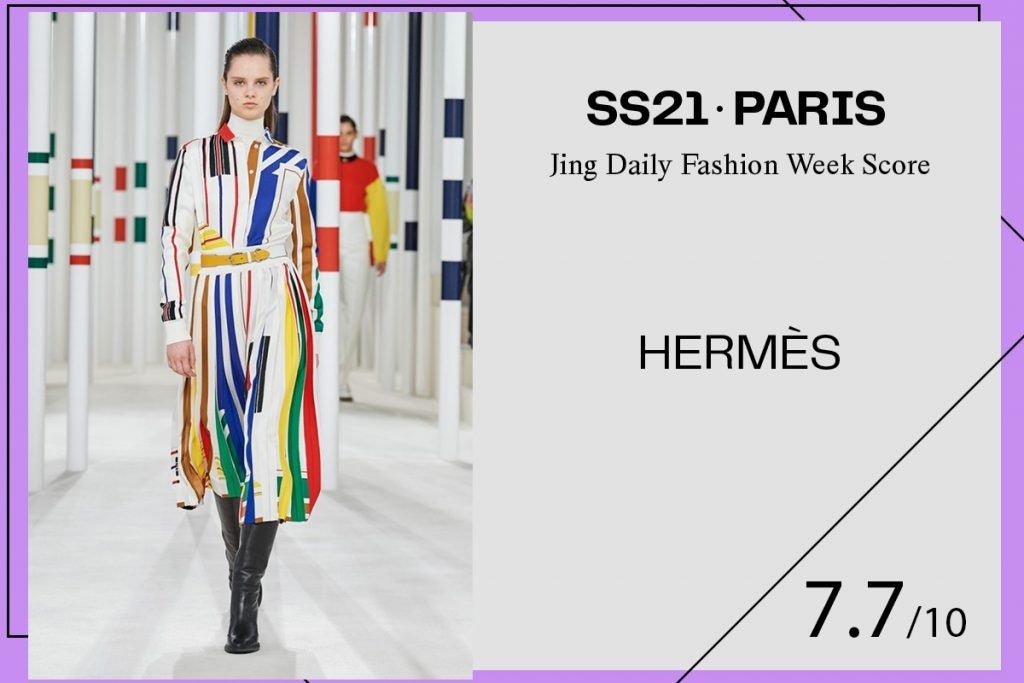
Under the theme of ‘resurrection,’ Hermès’ creative director Nadège Vanhee-Cybulski aimed to “declutter” this season (as she told British Vogue). Hermès, ever popular in China, had great traction online. The official Weibo tag for the collection Hermes SS2021 (#爱马仕2021春夏女装秀#) has 4.5 million views but just over 1,000 discussions on Weibo. Established handbag bloggers such as @Mr.Bags, chose to use the perennial tag #Hermès Female World (#爱马仕女性世界#), which has almost 80 million views in a post to his 6.3 million fans. However, Chinese consumers’ central focus — which contributed a large sum to the $2.7 million sales in one day as Hermès reopened its Guangzhou store after COVID-19 — may still be the brand’s handbags. Just like this season’s clothing, two new handbags, the Perspective Cavalière and the Mors de Brides, carry a sense of timelessness with their asymmetrical shapes and historic back stories. Have they the potential to be the next IT bags in China? Possibly, though it might take some time before they can catch up with stalwarts like the Birkin and Kelly, which represents the highest social cache in the circles of China’s high-net-worth-individuals.
Shiatzy Chen#
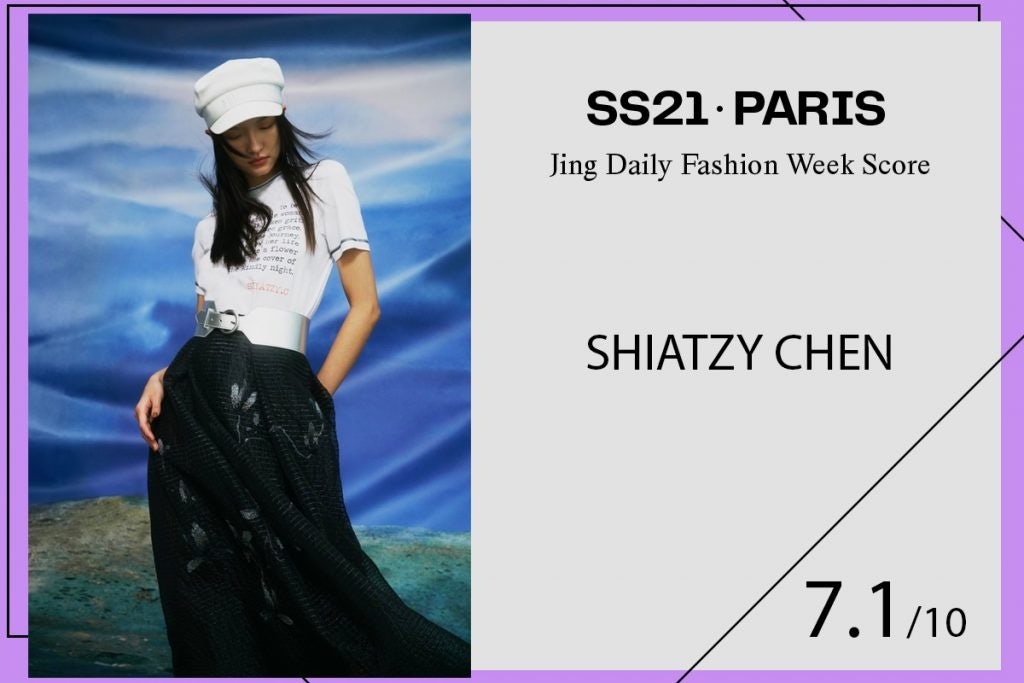
Centered around the fictional female warrior, Mulan, Chinese designer Shiatzy Chen released her Spring 2021 collection as a two-minute movie. The collection was worn by a mix of Chinese and Western models on a desert landscape, a reflection of Mulan’s war or even applied to a modern retake of the contemporary Chinese woman’s workplace. The garments made unisex silhouettes as military uniform-inspired shirts and belts while the quintessential Chinese elements, such as her plant and landscape embroidery, made it possible for the collection to be picked up by mainstream Chinese media given its relevance with the “China Chic” (国潮) trend. The brand’s official Weibo hashtag #SHIATZYCHEN21SS# has amassed almost seven million views.
Uma Wang#
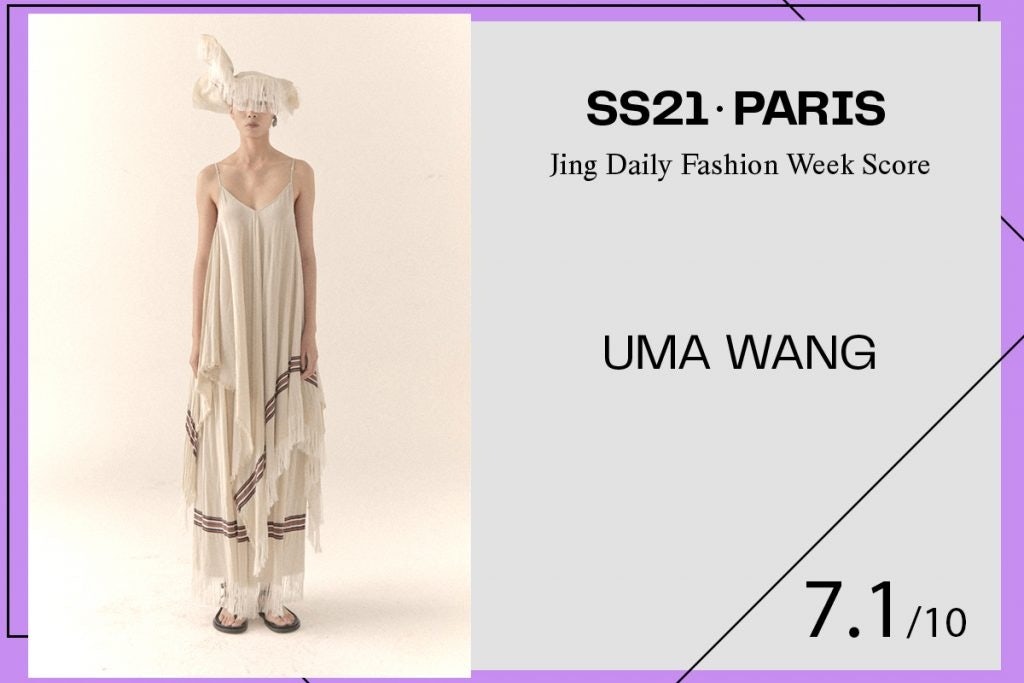
Uma Wang presented Spring 2021 through photography and a 5-minute video that hinted at a religious inspiration. The film documented three chapters — morning prayers, church, and evening prayers. The brand’s lookbook has been posted by fashion KOLs including @Dipsy迪西 and @Kingdom of Elephants(小象王国) and received positive comments like: “The low-saturated and introverted tone codes elegant and gentle oriental aesthetics.” One of the most established homegrown independent designers, Wang is well equipped to face common challenges such as balancing global and local markets. Wang’s on-going partnership such as exclusive limited editions with local retailer, Labelhood, is one of her most imaginative solutions to ensure the brand attracts and retains valued domestic customers.
Balenciaga#
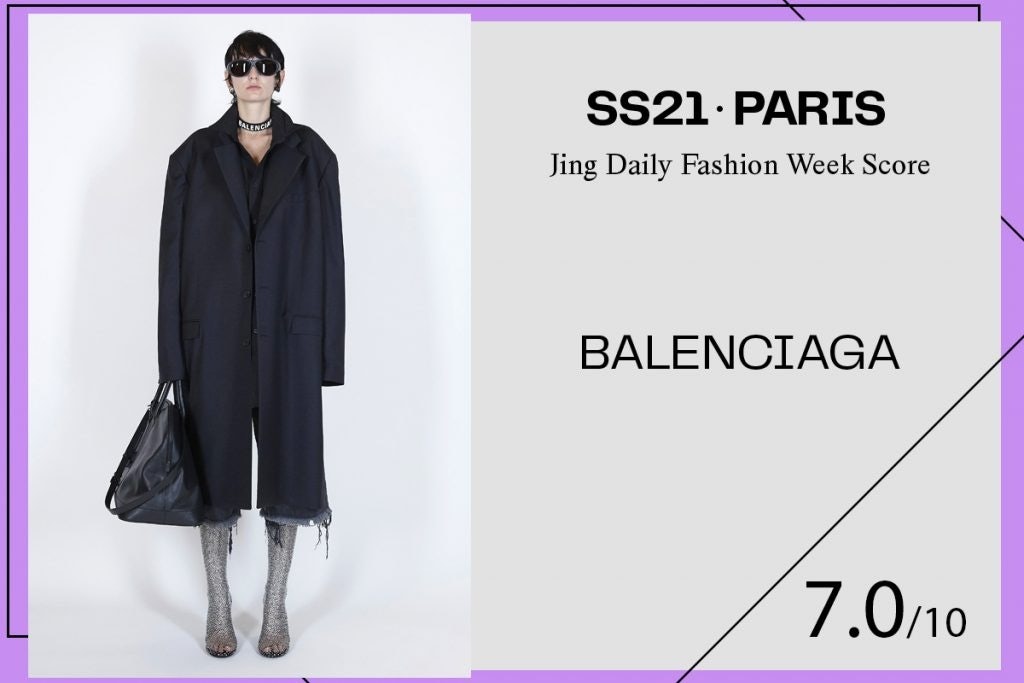
Designer Demna Gvasalia continued his exploration of fashion absurdity in Balenciaga’s summer 2021 pre-collection. The video presentation, with Corey Hart’s ‘80s track, “I wear my sunglasses at night,” captured people walking with purpose on the streets of Paris. In addition to presenting an engaging livestream experience, the Russian designer has taken responsibility for the longer-term outlook and sustainability is top of mind. User @StreamzStyles commented below the video post on Weibo: “Demna found solutions to balancing social responsibility and the aesthetic values of fashion products.” Though the designer is well-known for his often grotesque visuals, the house needs to approach the brand identity with localized strategies to resonate with China’s younger consumers. Otherwise, Balenciaga’s Qixi campaign controversies will recur in the future.
Masha Ma#
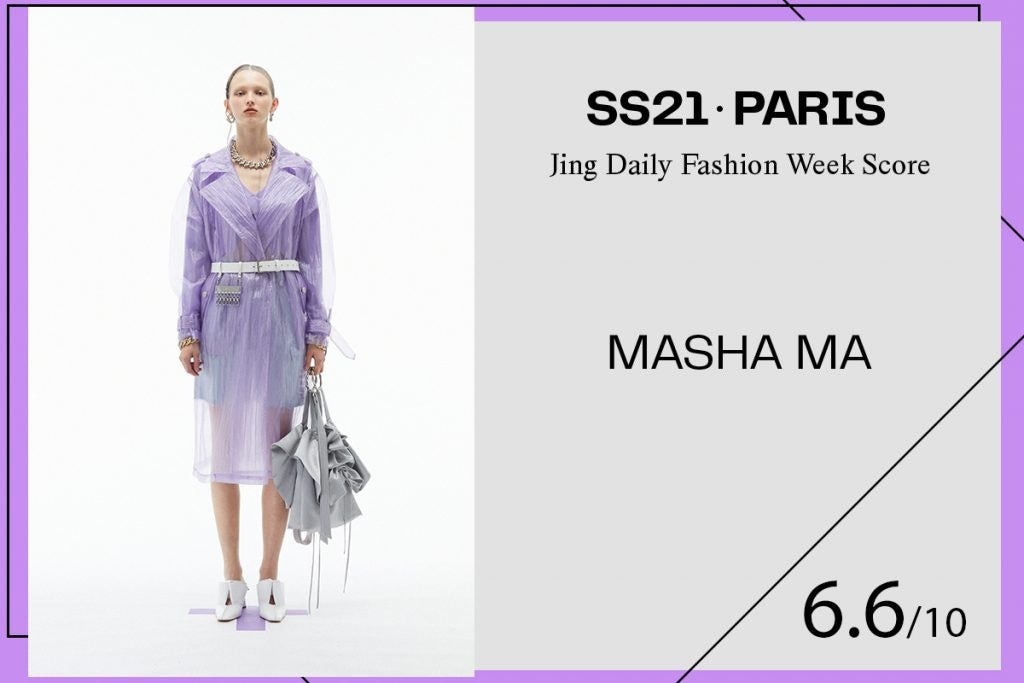
Alongside Uma Wang, Masha Ma was one of the first designers to gain critical acclaim out of China. Since then, she has expanded rapidly with the local fashion industry while managing to retain a global design philosophy that extends beyond her identity as a Chinese designer. This season, “Bella Donna,” is another iteration of the brand’s mission to design for contemporary women. The brand’s official Weibo post highlighted her use of a customized eco-friendly textile that helps reduce the use of water resources and CO2 emissions, but that environmentally-minded message was lost in the posts of fashion media and bloggers from Dazed China to @FashionMotor. From the racial makeup of the models’ to Chinese social media engagement, Masha’s global positioning of the brand means this particular collection failed to connect with China.
Loewe#
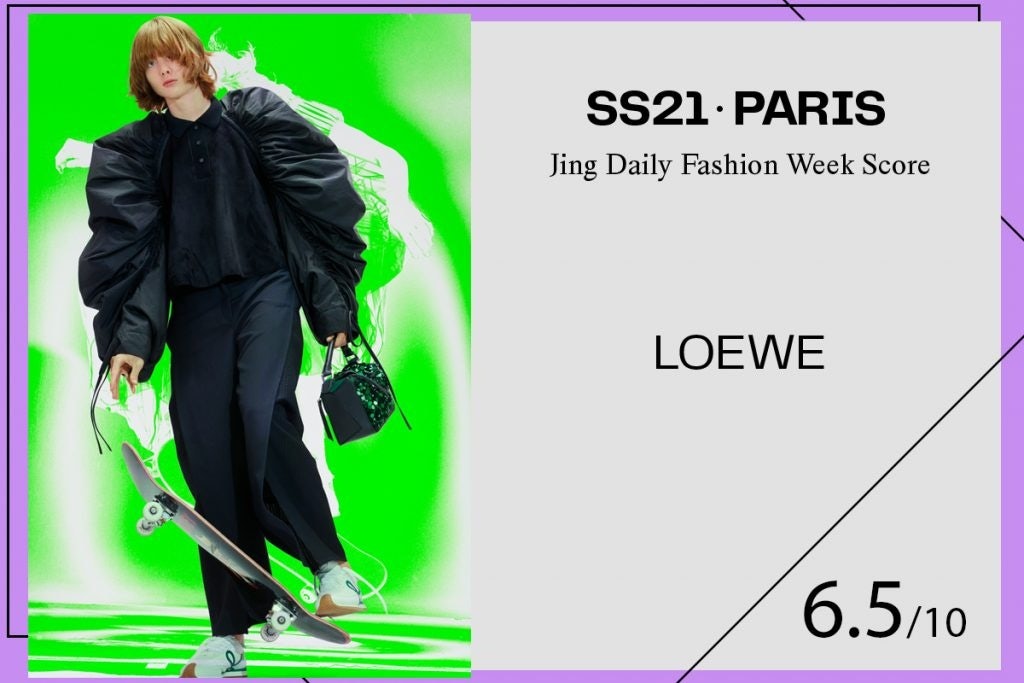
Designer Jonathan Anderson rethought the role of fashion under the current situation from an interdisciplinary context and unpacked the complexity of the issue by working across various genres. The collection, presented as a Show-on-the-Wall project, was delivered to audiences and guests as a kit: life-size posters, with a roll of wallpaper (commissioned from artist Anthea Hamilton), a pair of scissors, wallpaper paste, and a brush. The receivers including fashion KOLs and press were expected to decorate their walls by using the contents of the kit. Fashion KOL @Savislook shared her efforts on Weibo, showing her appreciation of the creative innovation of Anderson that pushed the boundaries of a fashion presentation. Unfortunately, given the absence of celebrities, both physically and virtually, the show’s online distribution went under the radar of Chinese netizens.
Givenchy#
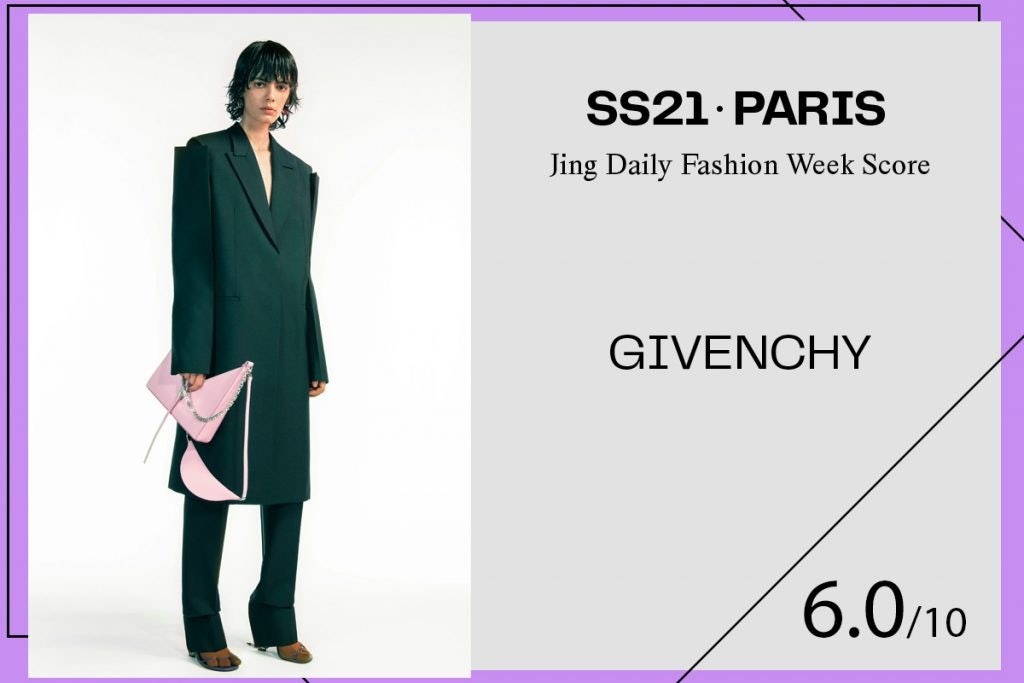
Matthew M. Williams’ debut collection at Givenchy was heavily inspired by Paris’ “love locks,” which have been carefully woven into the metallic collection. While the co-founder of the fashion brand, 1017 ALYX 9SM, might be lesser known to China’s fashion lovers he does have his fans. Established fashion blogger @gogoboi for one, has been highly receptive to his rework of the LVMH-owned fashion house. “It’s the kind of high fashion that young people would like,” Gogoboi wrote on Weibo. Although official promotion on WeChat and Weibo started a week before the runway show, the overall social engagement was low. This was not helped by the 2 AM showtime in China and the lack of celebrity endorsement.
Reported by Wenzhuo Wu, Yaling Jiang, and Gemma A. Williams.
